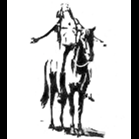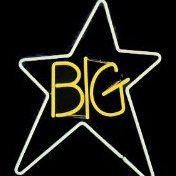-
Recently Browsing 0 members
- No registered users viewing this page.
Announcements
-
Topics
-
Latest posts...
-
2,594
ICE vs EV, the debate thread
The post is factually correct it is you that is posting misleading information In August, battery-electric cars accounted for 14.4% of the EU car market, down from 21% the previous year. This represents the fourth consecutive month of decline this year, Electric cars In August 2024, registrations of battery-electric (BEV) cars dropped by 43.9% to 92,627 units (compared to 165,204 the same period last year), with their total market share slipping to 14.4% from 21% a year before. This was driven by the spectacular drop in the two biggest markets for BEV cars: Germany (-68.8%) and France (-33.1%). From January to August, 902,011 new battery-electric cars were registered, representing 12.6% of the market. https://www.acea.auto/pc-registrations/new-car-registrations-18-3-in-august-2024-bev-market-share-down-by-almost-one-third/ So are you going to accuse The European Automobile Manufacturers’ Association of providing misleading information because you don't agree with their statements -
35
Mother in Tears: Daughter Dies in Russia, Family Struggles to Bring Ashes Home
that is great to hear (well "to read"). Yes, education is like a gold this days. High value I used to know one wierd fella (through our common friend) who sent (is sending?) "licensed Thai massage therapists" to RU by dozens per week. Each head gives him $1K of profit and demand is still high. He is not really a Russian, rather Jew with dual citizenship. Maybe triple? They go to "parlor" and later being transfered to "boom-boom parlors". Funny is that they all very aware of their future occupation (he said) but it is "different timezone and nobody's watching" so mai pen rai. I met different types of criminals in BKK, but international pimp is too much, way too much. -
4
-
-
4
Dry herb vape recommendation anyone?
can't watch the VDO as I don't have any account I can log in with. I see a Fenix 2.0 for 4590THB. -
0
Fire Breaks Out at Industrial Factory in Map Ta Phut, Rayong
Picture and video below from the scene. At around 12:00 on September 22, today, a fire erupted at an industrial factory located in the Map Ta Phut district of Rayong. The fire caused a lot of black toxic smoke to drift across the area. Rayong Disaster Prevention and Mitigation Office reported the fire started inside Building 4 of Thai Plastic and Chemicals Co., Ltd., Map Ta Phut Subdistrict, Mueang Rayong District, Rayong Province, Fire trucks from Thai Plastic and Chemicals Co., Ltd. and fire trucks from SCG Chemical Co., Ltd., were deployed to the incident. The fire was in aVCM tank. Vinyl chloride is an organochloride, also known as vinyl chloride monomer or chloroethene. It is a. colourless compound is an important industrial chemical, mainly used in the production of polyvinyl chloride. From the initial reports from the scene, there were no injuries or deaths, and workers have safely evacuated. -- 2024-09-22 My Movie.mp4 -
9
Switching from Non-Immigrant OA to Non-Immigrant O on basis of Retirement
Thanks for your feedback. Can I go to Immigration and apply for a Non-Immigrant O Visa almost immediately after entering Thailand on 60 days Visa exempt or do I have to wait until later during my 60 day Visa exempt period? -
214
Trump vs. Taylor Swift: A Battle He’s Bound to Lose
Can we see your evidence that each and all of Taylor Swift’s relationships was sexual? If you put as much effort into that as you do into your slurs and innuendo you might start building a factual basis for your claims. I say might. -
23
you just gotta love Cats !
Is the Headline an order? I hate them with a vengeance. Horrible things. -
59
Teamsters’ Neutral Stance: A Blow to Harris and a Challenge for Trump
Hardly a blow, the members all still get to vote. Trump is imploding everywhere and the Delaware courts just took a bunch of his money too. The walls are closing in and the election is going spectacularly wrong for the felon in chief. -
7
High BP, revisited.
Not a worry, do nothing.@swissiehimself knows this but forgets sometimes I guess. -
32
Are cars legally required to stop for a zebra?
A post with a derogatory trolling comment and a reply has been removed, off topic anyway. -
35
Mother in Tears: Daughter Dies in Russia, Family Struggles to Bring Ashes Home
That's the epitome of hyperbole. Worked to death giving massages. Get real. Wait wait wait, I know. "She was forced by Putin to massage him until she died." That would play well in the West and probably in Bangkok too. -
481
I Love Donald Trump
The only hope as I see it, to never ending episodes of massive left to right swings as each Party wins and then destroys the other's policies, is for Trump to win by a landslide - or to lose by a landslide. I am hoping Trumps wins bigly, and then the Dems will be forced to get rid of their radical socialist views as pushed by Obama, Clinton and others, and move back to where they were when people like Musk and Maher supported them - progressive, by not lunatic left. -
10
Pedestrian Struck on Crossing by Motorbike: Suffers Broken Ribs and Ruptured Spleen
On the flip side of the coin, I, like many of us drive in Thailand and it's scary how many times I have had to brake suddenly when someone just walks out in front of me - even on motorways. Lights are an option but I would add these too 🙂
-
.png.3b3332cc2256ad0edbc2fe9404feeef0.png)











Recommended Posts
Create an account or sign in to comment
You need to be a member in order to leave a comment
Create an account
Sign up for a new account in our community. It's easy!
Register a new accountSign in
Already have an account? Sign in here.
Sign In Now